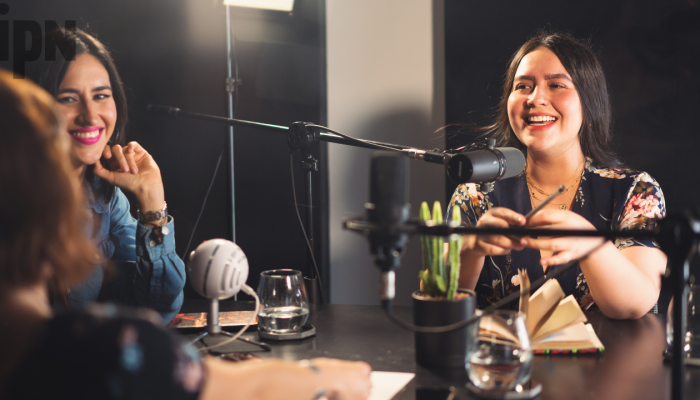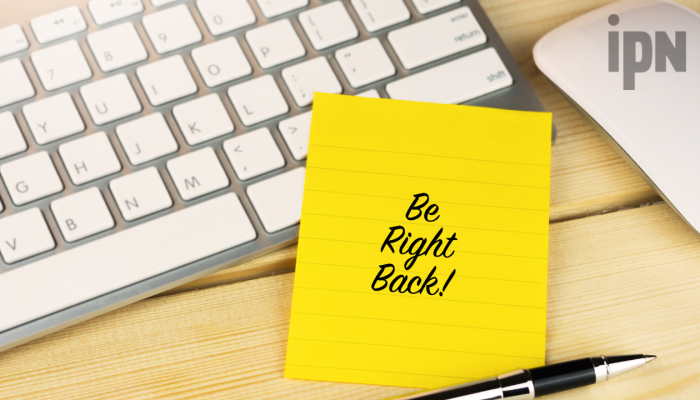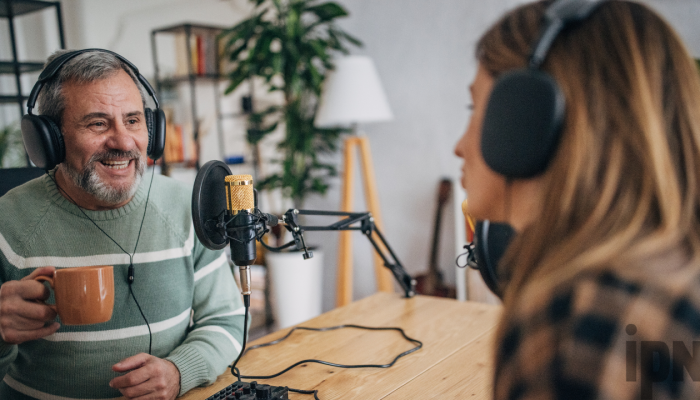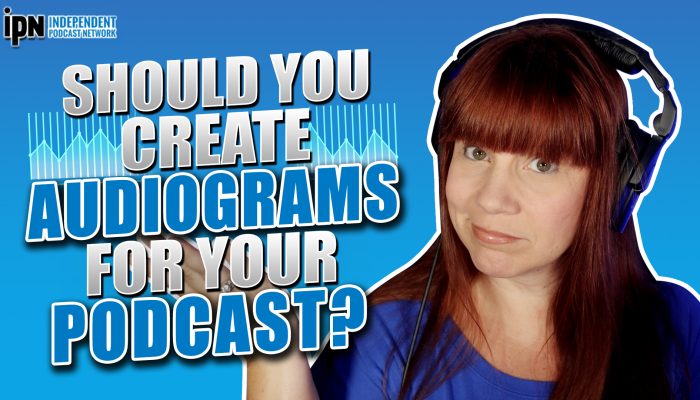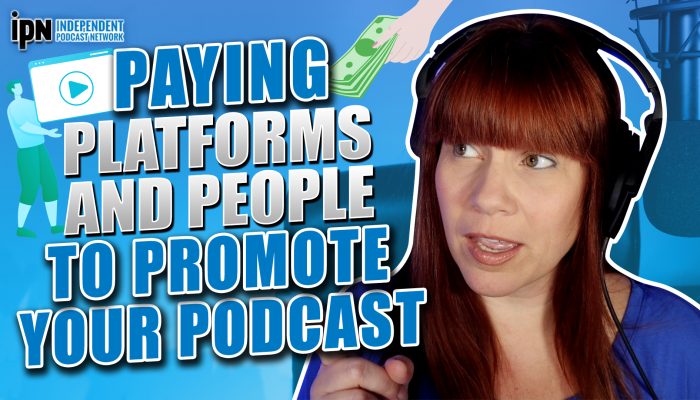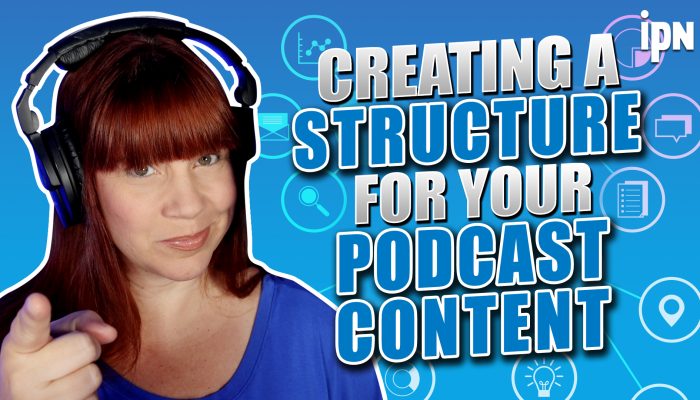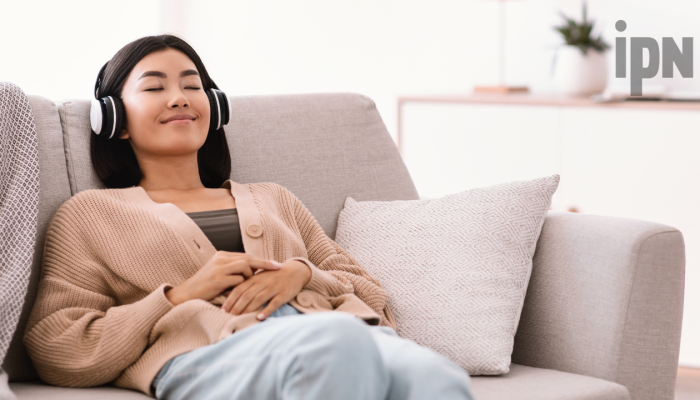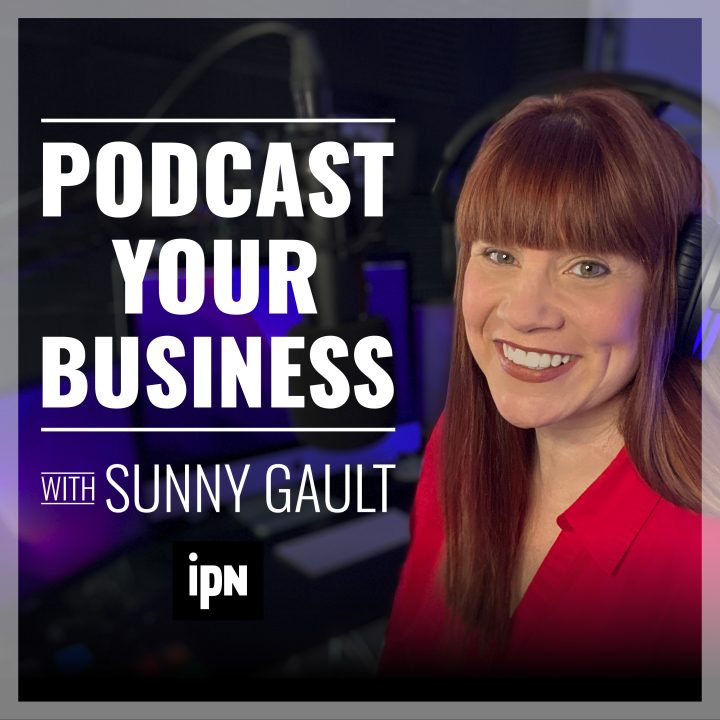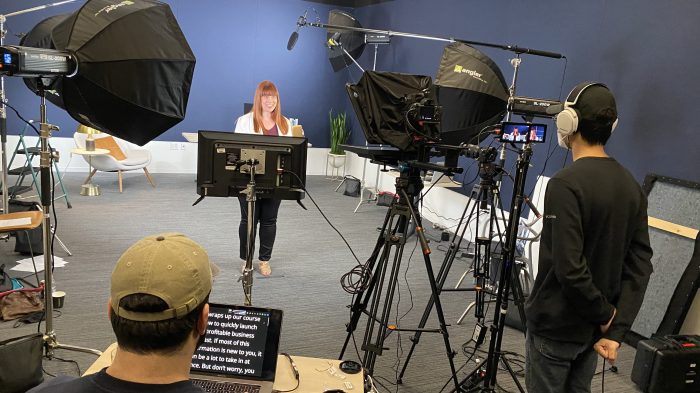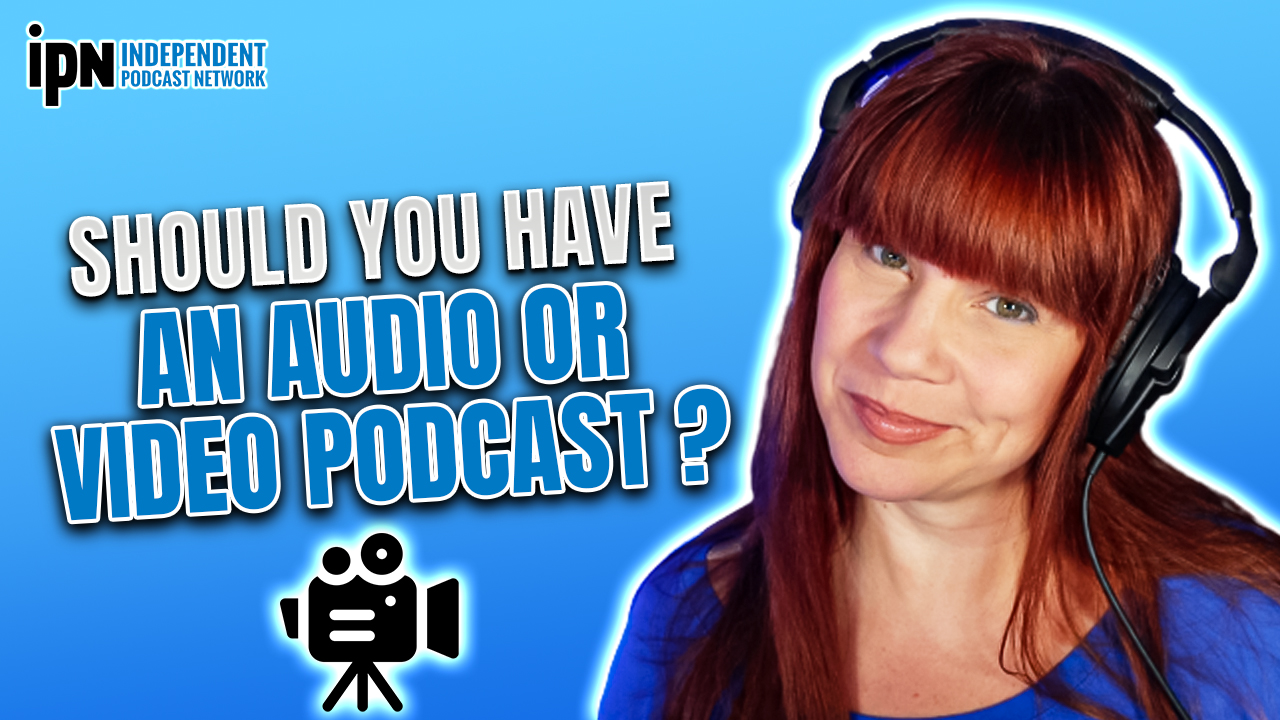
What’s the best format for your show?
Video seems to be all the rage today. And a lot of podcasters are being encouraged to record video as well. But is video best for your podcast? How are audio and video podcasts different? What are some of the things you should consider? Because this is not a one size fits all situation. Today we’re discussing whether or not you should have an audio or video podcast.
In today’s episode we’ll discuss…
- What a podcast actually is (because adding video is starting to blur the lines).
- The differences when creating and publishing audio and video podcasts.
- How to choose between the two options.
Want our top podcast equipment picks?
Want to get my top recommendations for podcast equipment? Download our equipment guide to fit every budget.

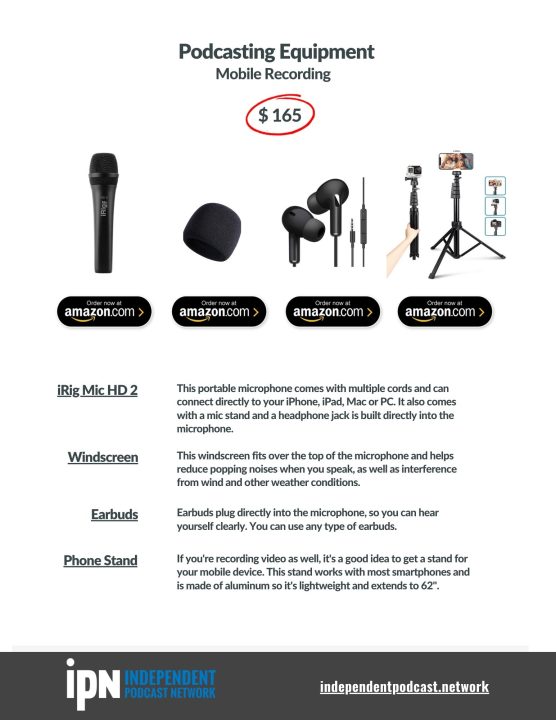
Episode Transcript
0:00
Video seems to be all the rage today. And a lot of podcasters are being encouraged to record video as well as audio. But is video best for your podcast? How are audio and video podcasts different? What are some of the things you should consider? Because this is not a one size fits all situation. Today we’re discussing whether or not you should have an audio or video podcast. Take it away, radio man. Podcast Your Business.
0:34
Hello, everybody. Welcome to Podcast Your Business. I’m Sunny Gault. I am a podcast coach and mentor. I’ve been podcasting for about 17 years, believe it or not, yes, that numbers real. I’m also the founder and CEO of Independent Podcast Network. And I’m here to help you create amazing podcasts for your business. And we do this by mastering the five P’s of podcasting.
0:58
The five P’s of podcasting are something that I talk about in one of the courses that I offer, it is for podcast beginners, and it goes through all the things that you need to know to become a podcaster, a successful podcaster. And then that we talked about prep, plan, produce, promote and profit. Prep meaning, should you even start a podcast? Someone put this idea in your head? But is it really a good idea? Can you really make it happen? Plan? What is the look and feel for your show? Produce? How do you create the content? Promote? How do you tell everyone about it? And then profit is perhaps the most important or you won’t be podcasting for long? And that is how do you make money with your show? So Mr. radio man, what are we talking about today? Plan.
1:42
Yeah, we’re talking about how to plan for your podcast, because determining whether you’re going to have an audio or video podcast really falls into format, which is part of planning for your show. So when I say the word podcast, what comes to mind? Do you think of audio or video? Now the reason I’m asking this question is because I think we’re at a point right now with technology, that you’re going to start to see more and more video podcasts popping up. Right? The technology is there, we can now record online and do all this fun stuff we couldn’t do before. So are you going to have a video podcast or one that’s just audio? And by the end of this show, you should be able to answer that question. So today, here’s what we’re going to talk about. First, what is a podcast? We’re gonna define this for you guys. I welcome your answers as well, maybe your answers a little bit different than mine. Because, again, adding video to all of this is starting to blur the lines. And I’ll explain that a little bit. We’re also going to talk about the differences between audio and video podcasts. There are pros and cons to both I am not on either side of this whole debate. Okay, I think there’s reasons to do audio, there’s reasons to do video, it really depends on you and what you want for your podcast. And finally, we’re going to talk about how do you choose between the two? What are some real questions you need to ask yourself in order to get to the bottom of this and actually see it through? Okay, so we are gonna get started right after this quick break.
3:12
Should you create an audio or video podcast? I feel like there is a lot of pressure for podcasters to at least consider video if not do both. Now, that’s great, if that works for you. Fantastic. But video podcasting is not going to work best for everyone. Just because the technology exists, does not mean you have to take advantage of it. It may work for your show and may not work for your show. So in diving into this, let’s talk more about what a podcast is. Because the more and more I podcast the more I realize I’m not just a podcaster. I’m a content creator. And that’s important because what really is a podcast here the term podcast is really about how your content is distributed. If your content is distributed through an RSS feed, which we’ve talked about on the show before, it’s what allows your show to appear on Apple podcasts, Spotify, Google podcasts, all that fun stuff. If it’s distributed through RSS feed, technically, that’s a podcast However, it’s still a little blurry. Because blogs are distributed through RSS feeds. At least they used to be right. So now you’re talking about adding Oh, well. It’s a podcast if it’s audio. Okay, fine. But now we’ve got video podcast. So where in the world? Where do we land here with the term podcast? So I don’t want you guys to get so caught up in the name podcast. Some people right now are creating what I call episodic content. So they’ve got multiple episodes, right? And they’re putting it on YouTube, and they’re calling it a podcast.
4:56
So it’s a little confusing. Now I started podcasting a really long time ago. And what I used to love about the term podcasting is we were considered SideRed, like this rebel group, okay, we were going against traditional media by saying, we are going to create whatever the heck content we want, you can’t have any control over it. And it’s going to be free. And you know, what we’re going to trade with each other, you know, Creative Commons, all that kind of stuff. And it kind of broke these barriers that traditional mediums had had over content, right, the old idea of film studios and things like that, you know, they have their content, and they keep it and they hold on to it for dear life, you know, and they suck every last cent of it, you know, you know, they get as much money as they can out of it. Like that, you know, podcasting just like threw all of that against the wall and said, We’re done with it, like we’re done. This is media on our terms, we’re going to talk about what we want to talk about. And I found that so liberating, but here’s the thing now is we have more and more ways to do just that. It doesn’t have to be through a podcast, right, you can hop on your phone, and you can record some video and it can go immediately to your Facebook page, or wherever you want it to go, right? We can stream live from multiple devices at once. We can chat with people on multiple platforms at once through our computers. It’s insane. Okay, so I’m telling you this. So you don’t get so caught up in the word podcast, because I really think that this is going to continue to change. And really what you are is someone who wants to create content and wants to share your voice with the world. So now that I’m off my soapbox, I’ve said my piece guys will continue on, but don’t stress out about the term podcast. Okay.
6:45
Alright, so having said that, let’s talk about audio, audio podcasts versus video podcasts. Okay? Now, a lot of people say record video, if you’re on the fence here, record video, and then just take the audio, you know, just rip the audio out and then you have an audio podcast, okay? You kind of get a two for one. That sounds great in theory, okay. But I want you to have the complete picture of what that’s going to require you to do, because there’s a lot of stuff involved, including some major multitasking. Okay, the first thing that I think about is even how you deliver how you say things in a show, you will say things differently. If you know your audience can’t see you. Right? If you’re trying to record video and audio, it is always going to sound a little weird, right? Because for your audio audience, you’re describing something you’re doing and your video audience on some levels, like that kind of looks really stupid. Why are they doing that? I mean, they understand why, right? But there are some things to consider. So content wise, you’ve got to kind of spell things out for people, you can’t just show something on the screen. If you’re gonna just release something as an audio podcast, right? You’ve got to tell them, you know, if you’re going to do some sort of video clip and stuff, you got to tell them what they saw. It’s a little awkward. Okay, so when people say oh, just just rip the audio from it. It’s not that easy. Okay. Some other things to consider. I’m gonna go through a couple categories here. First, I want to talk about equipment. Okay. video equipment is more elaborate. And yes, prices are coming down. Yes, technology is getting more and more simple. But you I always recommend if you are going to have a video podcast, invest some effort into your equipment, okay. I don’t recommend just going with web webcams, most webcams are not the best. Okay, so you’re gonna have to get some sort of external video camera, which may or may not require a tripod. Okay, your you may have to even get a better computer. I have been recording with some people recently, and they’re on a laptop computer, and it’s not an old laptop, but it still doesn’t support some of the video stuff we were trying to do. For example, we were trying to do the other day green screen, and we were using a live streaming program and the live streaming program was pretty taxing on it, right? So live streaming is a whole other beast, we’re not really going to get into that today we’re going to mainly talk about recording video in advance for your show. But that’s just one more thing to consider also graphics. Okay, you have to worry about like show intros and bumpers and you know, things like that with an audio podcast but with a video podcast. You’re not just thinking about the audio you’re thinking about the video as well and so you need some sort of graphics some sort of intro for your show. Are you going to pay someone to do that? How’s that you know gonna come about so that’s all the equipment that’s kind of obvious right?
9:42
Then we have the recording process. All right for video some things to keep in mind. Not only do you have to have the right equipment but then you have to be more concerned about what you’re wearing. Do you have makeup on are you willing to put on makeup there are some days guys I will be completely honest. I am not Gotta put on makeup. So that’s an issue, I don’t want to do my hair, I don’t want straight my hair, I don’t want to take a shower, I don’t want to do whatever it’s going to require me to do. You also have to consider lighting, lighting will make or break your video podcast. And then in addition to that, you have all sorts of other things like, Okay, you told a guest that they’re going to be on your video podcast, they agreed the cameras fine. And then they turn on their camera, and I’ve had this happen before, and the background is a mess, you know, or, you know, they see dirty dishes in the background or, you know, something really distracting. Or, again, back to the lighting and natural lighting, you know, you’ve got this huge window to the side, and it’s blurring them out. Or, you know, they didn’t have a high high enough quality camera, so they look a little pixelated. So I’m not trying to be Debbie Downer. I know it sounds like I am, I’m not trying to be Debbie Downer with video, guys. But I want you to know what is going to be required of you. The other thing is, if you travel a lot, it’s going to be harder to keep up a consistent look. Because now you’ve got to deal with video as well, your backdrop may change. Now, if you’re going to use green screen that is one way to get away from that, right, because you can buy those green screens that just go on the back of your chair fold up really nicely for travel, and then you put whatever background you want. But if you’re trying to keep a consistent look, and you’re always in a certain studio, and then you need to travel for something, well, that’s going to be a problem, right. The other thing is you may have to use different types of programs to record. So for example, for video, it’s out, it’s actually becoming more and more easy to record video online. A lot of the programs that were originally just to record audio have now converted to video. So if you’ve got a remote guest that you need to record with, most of the popular sites are incorporating video as well. So that’s not necessarily too bad. Unless your guest doesn’t have really good internet, that’s something to consider. Sometimes you don’t know until you know, you get on the call and figure out that someone looks really pixelated. The other things to consider would be your guests being a little bit more nervous because they’re on camera, right? They might be nervous with an audio podcast as well. But when you’ve got that additional element of having to be on camera, look at the camera, you know, look confident, don’t look at your notes, so much all of that stuff. That’s just one more thing for your guests to consider. But on a positive note, having your guest on camera usually leads to a better rapport between you and your guests. Not always if they’re too freaked out by the camera, that’s not going to work. But most times see we pick up visual cues when we’re conversing with somebody, right, we don’t necessarily step on their words, because we see that they’re about to say something or you know, they’re demonstrating something with their hands or, you know, we don’t even realize it until you’re just seeing you’re just recording audio how much you miss out on. So most times, I do find if I do at least turn on the camera, maybe I don’t use the footage. But if I even have the person on camera, just be able to see them and they can see me, it usually does result in a better conversation.
13:16
Okay, let’s talk about production. Now. When you are done recording, and you’ve got to put everything together the biggest thing that I noticed, because I do both I have a video podcast and I have certain podcasts that are just audio and believe me, the ones that are just audio are just going to stay audio because it’s just easier for us to do. But one thing that I’ve noticed is that if you make a mistake, and you’re recording video, it’s a lot harder to edit it out. Because you’re gonna have what’s called a jump cut. And I know this is like an editing style nowadays, with short form content online. But it is when someone makes an edit, and they’re in a different spot than before the edit. So it’s very abrupt. It’s like they’re squirrel, right? It’s like a really sharp movement, it’s really jarring for the eye. Again, it’s an editing style. Now, I’m kind of from the old school days where that was a really bad thing. So I still look at that. And I kind of view it as a sloppy way to get around stuff. But just know, you know, I’ve had shows that I’ve edited that have been audio podcasts that I’ve made a million different edits, because that’s what was required. I could have never done that. If that was a video podcast, it would have looked like Max Headroom or something crazy like that. So consider the editing that you’re going to have to do editing is going to be much more difficult to edit out those mistakes, it could cost you more because if you’re handing off the editing to someone else, usually to edit a video podcast is going to cost more money. So check on those prices. It may also take longer to edit. And again if you are doing this yourself, you may have to get a different editing program because just because your program edits audio doesn’t mean it’s going to edit video. So those are some of the things to consider for production. Now Let’s talk about distribution and promotion. Now this is where we’re going to get more on the side of video, because this is where you’re really going to see the benefit, you can put video in a lot more places. And the truth is, is that video grabs people’s attention more. Again, we’re just naturally drawn to other humans. And when you just have someone’s voice, there’s a little bit of a disconnect. So if we can physically see the person, that’s even better, so many times, I will be, you know, at my computer doing some work, and I’ll want to listen to a podcast. And if the podcast also has a video component to it, I will have it on one of my side monitors, and I would prefer to have it up there. So I can occasionally glance up see them, it just feels like like you’re part of the gang a little bit more, at least, that’s kind of how I feel. So consider that as well.
15:53
One thing I would discourage you with is to create an audio only podcast, and convert it into video by placing an image and some sort of squiggly lines. Anytime anyone talks, you guys all know what I’m talking about. If you do that, for your episodes, and now you’re calling that a video podcast, trust me, most people are not going to listen, and I speak from experience, I went through this whole process, I had hundreds of episodes, I was like, well, now I’m gonna get all the SEO benefit. And I’m gonna put all of these up on a YouTube channel. And again, there’s not it’s not really video, it’s an image with some squiggly lines for each episode. And I thought that was going to help my shows you guys know buddy watched nobody watch, I don’t know if it’s the algorithms with YouTube or what’s going on. But that does not work, it’s almost better to record a lower end, whatever, you know, it’s just kind of behind the scenes. If you happen to catch the video, it’s really behind the scenes, and you’re mainly focused on the audio. That’s one way to do and just call it behind the scenes like this isn’t our main show. But we’re showing you guys how we do our show that would be better than some sort of just graphic, upload it and call it a video because it’s really not. O
17:08
kay, so now let’s talk about how do you choose between these? How do you choose whether to do an audio podcast or a video podcast? Hopefully, you have some ideas swirling around in your head right now. But I want you guys to ask yourself some of these questions. First and foremost, how comfortable are you with being on camera and be real with yourself? This is not one of those times to say oh grow into it. There’s other ways to grow into it. But if you’re relying on it for your podcast, that is a ton of pressure. If you do not like being on camera, do not do a video podcast. I don’t care. Who told you how many views you’re gonna get if you do that, don’t do it. Next, who is your avatar? Now? We’ve talked about this in previous episodes, your podcast avatar, your audience avatar, who is your avatar? And how do they primarily consume content? Now you guys know that I have a bunch of parenting shows. And one of the things I always have to think about is will parents actually watch this video, if I put out that sounded bad. If I put the video out, would parents actually watch this because parents only have so much time in the day. And what I have learned is shorter content five minutes or less if I’m going to do videos, so no, my parenting podcasts are never going to be video podcast, I don’t have the time, the energy for it for all the reasons that we’ve already talked about before. Plus, I know my audience is not going to be that interested in listening to a 30 minute 45 minute conversation, I’m gonna get just as much if not more out of just doing an audio podcast where they can multitask, right? They can be cooking at the same time. They can be you know, helping their kids with their homework, they could be exercising, whatever it is. Next, what is your budget? And what other resources do you have available? As we already said, it’s going to cost more money, and more effort, more energy, all of that and perhaps more people to do a video podcast? Are you prepared for that? And this goes along with it? How much time and energy do you want to devote to this podcast, it’s going to take more time, more energy, it may take a little bit more time to get the content back. If you have someone producing it for you. It’s the whole workflow is just probably going to take a little bit longer. Are you okay with that? And this is important too, when it comes to promotion? What sites are you already active on? And do they except video? I’m gonna assume most of you don’t have someone handling all your social media. So this means when you put out this video content, you’re gonna have to engage people with it. So the sites that you naturally want to be on? Do they specialize in video or is there a video component that you can put your podcast on and take advantage of right and grow your audience that way? So there you go, guys, those are my tips the difference between audio and video podcast some of the pros and cons, things to consider and then some questions to ask yourself when you’re about to make this decision. So stay tuned, we’re gonna be right back. I’m gonna tell you about a handout that I have for you and some more good stuff.
20:11
All right, if you guys are in those beginning stages of starting your podcast, I have a free handout for you on the website for Independent Podcast Network. And it is all about how to choose the right podcasting equipment. And what I’ve done is I have selected three different options based on what you need for your podcast. And yes, I do cover audio and video. So if you’re interested, and getting my recommendations for podcasting equipment, check out that guide. The link is below in the description. You guys thanks so much for listening to today’s show. Please check out the website Independent Podcast Network (https://independepodcast.network). We have lots of free resources. I just completely did a complete overhaul of the site. Everything is now free, including blog posts, podcasts, episodes, videos, handouts, and if you’re new to podcasting, we even have that free course I was telling you about it earlier with the Five P’s of podcasting. It is free on the website, Independent Podcast Network. Until next week, remember, podcasts are awesome!
